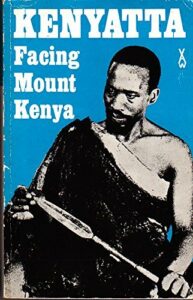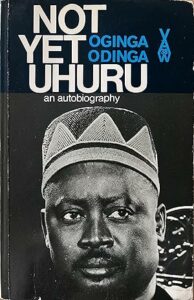by Billy Kahora, Visiting CBCP Research Fellow 2024, University of Bristol
In the months of May and June 2024 I spent two weeks at the University of Reading’s CBCP as part of my visiting fellowship to look into the Heinemann Educational Books Archive, particularly focusing on material relating to the African Writers Series (AWS) to get a better sense of the behind-the-scenes conversations behind the publishing of early Kenyan creative writing. My interest was in tracing the genealogy of the Kenyan political novel, asking questions of the early form and its concerns, and trying to locate its poetics and stylistics.
In my recent PhD project (2023) I had argued for a new direction in the novel form based on using different multiple voices and a mimetic approach in fictionalising Kenyan actualities to take on Kenya’s new politics of devolution. During my doctoral study I also stumbled on the fact that the early Kenyan political novel had been heavily influenced by non-fiction in the form of cultural autobiographies/ethnographies, as argued by Simon Gikandi. It was this connection that I now wanted to follow at the University of Reading’s Special Collections.
I had also come across several studies on the influence of both the European novel and the colonial settler form on the early Kenyan political novel during my PhD. I was now struck by how the impact of Kenyan political non-fiction on the country’s early fiction was yet to receive the same volume of attention.[1] I felt that the early Kenyan novel had not only taken on the nationalist themes of the nonfiction but also story-modes and some of its stylistics in using the individual character to illustrate communal contexts. This is particularly evident in Ngugi’s first four novels and Rebekah Njau’s Ripples In The Pool in how individuals and their voices are captured through communal practices. From my initial findings at the archives on the behind-the-scenes workings of both early Kenyan non-fiction and novel production, I decided to work on a series of literary essays titled ‘Tracing The Genealogy of the Kenyan Novel’.


To provide some context on these Kenyan non-fiction nationalist works: Published within the African Writers Series were two of the most influential non-fiction works authored by individuals who would become Kenya’s leading politicians: the autobiography of Oginga Odinga, Not Yet Uhuru was released as the 38th title in the series in 1968, and Jomo Kenyatta’s Facing Mount Kenya brought into the series in paperback as the 219th title in 1979 after it was acquired from Secker and Warburg who were the initial publishers in 1938. As Gikandi has observed, these works were crucial in providing political contexts for early fiction writers such as Ngugi Wa Thiong’o who were ‘cloistered’ at Makerere learning a curriculum that was dominated by the English canon. This forced these early writers to re-evaluate their own literary concerns with their works becoming increasingly informed by the nationalist concerns of non-fiction. I found vital correspondence (2 folders of 220 items for Not Yet Uhuru and 1 folder of 30 items for Facing Mount Kenya) in the archive. The publishing conversations around these books provided me with detailed insights of how they came to be, and from this, to start to offer further explanations why they were so key for early fiction writers.
Jomo Kenyatta’s Facing Mt Kenya provides a fascinating backdrop for political writing in the form of the novel in Kenya. Published in 1938, the work is part ethnography, part cultural studies treatise on the Kikuyu, and part manifestation of Kenyatta’s political ambitions. But as Bardoulph has stated, the book not only captures ‘the realities and the spirit of his own [Gikuyu] culture’ but in its ‘literary coherence and the effectiveness of the dense, vigorous style, lyrical at times’ it tells a story that ‘has been an inspiration to many writers in Africa’.[2] This can be partially attributed to a ‘storytelling’ mode found in the anthropological course Kenyatta learned under Professor Bronislaw Malinowski in 1937 at the London School of Economics. As Bruce Berman notes in his essay, ‘Ethnography as Politics, Politics as Ethnography: Kenyatta, Malinowski, and the Making of Facing Mount Kenya’, this was an anthropological discipline ‘poised between the extremes of positivist science and a storytelling’ that helped ‘in creating a scientific text from biographical experience’. A storytelling mode that I feel would go on to influence the early Kenyan political novel. And as Gikandi observes, ‘the same desire to re-establish a vital link with the past, to seize the creative initiative, and help their society “regain its belief in itself …” not only informs Kenyatta’s Facing Mt Kenya but also Mugo Wa Gatheru’s A Child Of Two Worlds and Ngugi’s first two novels, The River Between and Weep Not Child.
But what can also not be discounted in how Facing Mt Kenya came to be is the emergence of a vernacular print culture amongst the Gikuyu at a particular time the community was converting to Christianity which is the same period Kenyatta was coming of age. John Lonsdale succinctly captures the evolution of ‘Kikuyu Christianities’ and the emergence of a generation of readers (athomi) to which Kenyatta belonged in an essay of the same title. As Lonsdale notes, early Christianity initially fed a hunger in individuals breaking away from Gikuyu community traditions needing a new narrative to explain their lives. This would gradually evolve to a point where the literacy that came with the missionaries eventually ‘conferred power in internal Kikuyu politics’ (as Lonsdale observes) becoming highly attractive to a substantial Gikuyu population. Kenyatta’s own life and his appearance at the Kijabe mission when he was a boy suggests a life-story that is in many ways a representative trajectory of many individuals and a manifestation of the evolution of Christianity in Kikuyuland.[3] Like many others who left the village and entered the mission and became educated, Kenyatta started to understand the importance of narrative, eventually becoming a muthomi – a generation of individuals who would become part of the post-independence Kenyan elite. He would however rise to the top through his role in nationalist politics. Parallel to Kenyatta’s political trajectories are the cultural and literary influences that Berman traces in his essay that would inform Facing Mt Kenya, not only in the text’s content but also in its Biblical and anthropological story-forms which would then go on to also inform the emergence of the Kenyan political novel.
On Oginga Odinga’s Not Yet Uhuru and Luo modernity
The University of Reading’s Special Collections also provide a fascinating account of the production of another major Kenyan non-fiction work, Oginga Odinga’s Not Yet Uhuru. Most telling is the politically fractious context in which Odinga is trying to work with his editors to get the book finally released. Inadvertently, this produces its own non-fiction narrative parallel to the ‘novel of discontent’ against the new Kenyan state that would emerge soon after. The book itself provides an interesting autobiographical prologue to Odinga’s political ascendance as a Luo equivalent of the athomi generation in Kikuyuland.
Not Yet Uhuru’s early pages recounts what can be seen as the Luo path to modernity and an establishment of the very ideas through which one can start to understand the context behind the works of early writers from the region such as Grace Ogot. Very early on Odinga states that the elders had advised their people, the Luo should never fight ‘white’ people but ’study their lives and their minds’. Just as Kenyatta in Central Kenya had followed the path of education, Odinga would do the same within the emergence of a Luo modernity. His central place within that but also a regional and national politics suggests a major role in turning Luo elites towards Kenyan nationalism. This finds sympathy reading Grace Ogot’s memoir Days of My Life (2012) – her account of how she became a writer details her own similar trajectory through missionary education and ‘traditional’ Luo life with an eventual turn to politics. In some ways, parallels can also be broadly drawn between her writerly journey, the influence of Odinga’s life, if not directly his non-fiction work, with Ngugi to Kenyatta even if there are significant differences.[4] But what is important is how both Kenyatta and Odinga found ways of writing narratives of themselves and their people and their emergency into modernity that would in turn influence not only early Kenyan writers such as Ngugi Wa Thiong’o and Grace Ogot but many others who set their works amongst their respective ethnic communities.
From these foundational non-fiction works would also then come J.M Kariuki’s Mau Mau Detainee (1963) and Tom Mboya’s The Challenges of Nationhood (1970). These accounts are also just as influential to the Kenyan early political novel but in a different way. It can be argued that Facing Mount Kenya and Not Yet Uhuru provided a genesis, a foundation, a transition from tradition to the beginnings of a modernity. Kariuki and Mboya’s works – respectively themed around neo-colonial debates on land and trade unionism – would go on to illustrate the political evolution from colonialism and local modernities to successive political debates in Independent Kenya that the early Kenyan political novel would also transition to. For this blog, I have only managed to address non-fiction texts from Luo and Gikuyu communities and their influence on the Kenyan political novel form so far, but in my project Tracing The Geneology of the Kenyan Novel I plan to look further afield. The Special Collections have not only provided me with key access to publishing material on Kenyatta and Odinga’s works from which to write two essays that launch the essay project, but also that of additional AWS early Kenyan political novels by Rebecca Njau and Meja Mwangi among others that I will be looking into for the series.
[1] In 2010, through constitutional reforms, Kenya changed its politics from a ‘centralised state’ to a devolved system with county governments.
[2] Bardoulph, ‘The Literature of Kenya’ in J.D Killam’s The Writing of East and Central Africa
[3] Kenyatta, Jeremy Murray-Brown
[4] The difference here is the role of Mau Mau resistance within the Gikuyu which created a different set of circumstances between the latter and Luo modernity. On one had the societal evolution is the same till the major disruption of Mau Mau resistance which created a different set of thematic priorities between Ngugi the writer and Ogot.

